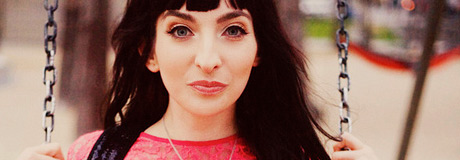6 Steps to Eliminate Limiting Beliefs
 Photo by
Stock Photo
Photo by
Stock Photo
** New: Audio:
(Intro: listen above or download mp3 file)
I consider myself a frugal person and I’ve always thought that it was a good thing. However, I recently discovered that, while frugality is a worthy and useful quality, the root of my own frugality is based on some limiting beliefs that I’ve held.
It all started with the story of a little dell laptop, and the story went something like this… The computer I use every day is a five-year-old Dell laptop. It was originally my work laptop from Amazon.com, until the hardware lease expired, and I was allowed to purchase it for $68.
This little machine has served me well, but due to its nature (ahem – it runs on Windows) – its gradual decline in reliability and performance was noticeable (even after re-installing Windows and doubling the RAM). I found myself becoming increasingly frustrated by the need to reboot my computer at in-opportune moments, and the random crashes and slowness of Photoshop – which I frequently use.
Last week, Jeremy watched as I was hunched over my little laptop, frustrated once again by the slowness of its functions, hinting of the need to reboot. I cursed out loud, not wanting to reboot because I had too many browser tabs open; so I persisted, insisting that I could tough it out. He turned to me, and with a concerned expression, said, “Honey, let’s get you a new Macbook and an external display. I think you’re really gonna love it and you’ll be so much happier and productive.”
I have resisted converting to Apple for about ten years. My excuse was always that I couldn’t stand the keyboard differences. While this was somewhat true, it was also an excuse to stay within my comfort zone and to resist change. That evening, however, I reached a tipping point in my dissatisfaction with PCs, and decided to give Mac a try (while trying to ignore the resistance in my stomach).
So, Jeremy and his friend Dave took me to the Apple Store. Once inside, I immediately felt like a kid in a candy store, drooling over the sleekness of the machines and the beautifully minimalistic store design. We walked into the store with the idea of buying the cheapest laptop + display combo, but when I saw that the current generation of 23″ monitors have a glossy reflective display, I knew that it would distract me more than be a tool of inspiration and productivity.
Then we spotted it, the 30″ Cinema HD Display, which has a non-reflective matte screen and the higher price tag to go with it. The three of us gathered in front of the model display “oooowing and ahhhhing” at the enormous mass of aluminum beauty.
After playing with it for about ten minutes, pulling up Think Simple Now in the browser, and testing out Photoshop with great satisfaction, Jeremy proclaimed, “Babe, let’s get you this.” Dave smiled widely.
And then, it happened, I heard a peculiar voice inside my head say, “You don’t deserve it“.
I observed as the feeling glistened over me. While I was excited for and had always lusted over the Apple Cinema Display, I felt the guilt hover over me and turn the hope into shame, for even wanting it.
I felt sad and pathetic that I had picked this belief up somewhere along the way, and have been unconsciously carrying it with me, for god knows how long. Memories of my childhood began flashing in front of my eyes…
My Childhood: The Story of a Silent Limiting Belief
Growing up in communist China, my family was poor, and lived on a modest salary of 150 RMB ($18.75 USD) that my mother brought in every month. As a little girl, when I needed something, I always picked out the cheapest one instead of the prettiest one. Even today, my mother still tells the story – with tears in her eyes – of my five year old self, selecting the olive corduroy shoes instead of the red cotton ones, because they were 3 RMB ($0.37 USD) cheaper. And I still remember being made fun of by the other kids for what I wore to school.
The idea of not putting a financial burden on my mother became deeply ingrained in me and lasts to this day.
After moving to Canada, my family lived in the one room basement of someone else’s house. I never asked for what I wanted, out of fear that I was burdening my parents.
As I got older and became a teenager, fitting-in with my peers consumed much of my attention. I got into teen modeling, started making my own money and rejoiced that I no longer had to rely on my mom. I would go shopping and buy all the things I thought I missed out on; things that teenage girls wanted in order to secure their identity: makeup, clothes, and teenybopper magazines. Often, I would come home, and be scolded for having “wasted money” at the mall.
Somewhere in there, my five and thirteen year old self came to the unconscious conclusion and false belief that I didn’t deserve nice things.
Afterwards
I shared this belief and emotional discovery with Jeremy, and he stared into my eyes with great empathy and conviction and said, “If anyone deserves it, it’s you!” He continued with tears in his eyes, “Think of how many hours a day you sit in front of a computer, and think of the number people you can help if you are happier with your work station.” My heart melted, and a feeling of relief washed over me. He was right, but I still needed some time to let that sink in and start to believe it myself.
Recently, in an email exchange with a friend, she shared with me her recent discovery that she has always viewed herself as the “wacky sidekick”, and continued with, “I want to be the main character now. I no longer want to whine and complain about life. I no longer want to react to life, I want to be a partner with the Universe in creating the life that I want and am destined to live.”
Wow!
It became clear that I wasn’t alone; although our beliefs were different, they boiled down to the same issue. We all have conscious and unconscious beliefs about ourselves that either drive us forward or act like an unseen weight tied to our ankle. These beliefs either unleash our spirit or hold us back from our potential to BE and to live the best life possible, which is what we all deserve.
What are some beliefs holding you back?
Action: What to Do to Overcome Limiting Beliefs
Note: If you are looking for results, don’t just read the following steps, actually do the tasks each step asks. It’s best to be somewhere you won’t be disturbed, grab a pen and paper, and let’s start!

Photo: Simón Pais-Thomas
1. What Are Your Beliefs?
Beliefs are mental notions and assumptions we have, about ourselves and the world around us, that we hold onto as absolute truths. They are emotional and psychological and often irrational. They are formed through our experiences and interactions with the world. Dr. Rao says that these beliefs make up our mental model. Others simply call them unconscious beliefs. They often do not serve us but rather hold us back from pursuing our dreams and living freely and fully to our potential.
Many of these beliefs were formed and accumulated throughout our childhood. We picked them up through our interactions with others – like when we were scolded for doing something wrong or not doing something the way our parents expected us to. A common resulting belief is I’m not good enough, which then bleeds into other beliefs that affect us during adulthood, like, I’m not capable enough or I’m not talented or I’m stupid.
Relationship based beliefs are also very common, because the events associated with them are often emotionally heightened and leave lasting impressions on our subconscious mind. If we got hurt early on in our dating career, we might end up concluding that we do not deserve a loving relationship, or associate that love is a cause for suffering.
On a piece of paper, write some beliefs you have about yourself and the world around you that you’ve come to accept as reality. Especially ones that you know are over generalized, and are no longer serving you on your path to personal wellbeing. Some of these statements may seem like you don’t actually consciously believe them, but if you noticed an emotional reaction in your body, then you actually do carry that belief with you.
Here are some common beliefs:
- I’m not important
- Making money is a struggle
- I’m not good enough
- I’m not smart enough
- I don’t deserve it
- I am too young, people won’t take me seriously
- I am too old, it’s too late to start…
- I am a hard worker. I work hard for money.
- I’m pretty much doomed, I don’t have good luck, problems always follow me.
In other examples, here are some of my beliefs from the past (I no longer have them, however, I did carry them for many years until I realized that they were hurting me and limiting my potential to be happy):
- Good looking men are unfaithful or unkind.
- I am a bad writer.
- I do not deserve a loving relationship.
- I have to work hard to be successful, working without rest or having a social life.
- I am not pretty enough. I do not deserve or am not able to find someone I am attracted to.
- I am not a good engineer. They’re going to find out really soon that this is true.
I could go on for hours with a list of beliefs I have had about myself. It is something I now consciously watch for and have chosen to change about myself. I can speak from personal experience that unlearning these beliefs has served me well and I was surprised to find the abundance of goodness that was around me all along.
By brainstorming and writing these out for yourself, you become aware of them, and can choose to work on overcoming them.
2. Find a Counter Instance
Pick one of the beliefs from step 1 to work on and continue on with the remaining steps.
For your belief, look for one specific example where the statement is not actually true, where you did something or experienced something – even through someone else – that was not in alignment with your belief.
For example,
- For the belief I am a bad writer: this proved untrue when I wrote (fill in the blank) article two years ago.
- For the belief Good looking men are unfaithful or unkind: this has proven to be untrue in the case of x person’s husband.
This step introduces the possibility that there are flaws in this belief. As you go about your day, specifically look for examples that counteract this belief statement. For example, if your belief is “nobody likes me”, spend your day looking for “people who like me for who I am”.
If you are not finding an example after trying for ten minutes (please try!), move on to the next step.
3. How Has This Belief Worked Against You?
Think of all the instances where this belief worked against you, either kept you away from taking action towards something you wanted, or negatively affected you emotionally and thus affected other areas of your life – relationships, health, etc. How has this belief hurt me in the past? Write it down.
Change happens when we take action, and pain can be an effective motivator to catapult and accelerate our desire for change. When we’ve experienced enough pain, we will want change and will take action to make it happen.
Now, close your eyes and experience the pain you felt as a result of this belief. Visualize, hear, and feel the emotions of that moment. Make it as real as possible.
4. Find the Source
Dig deep into memories from your past – childhood, teenage years, early twenties or even last year – what instance or instances brought you to this conclusion? Be specific and write them down using as many words as needed to describe them.
Tip: it helps to close your eyes, and repeat the belief statement out loud. This triggers emotions that will assist in locating the events that contributed to its formation.
For example,
- For the belief, I am a bad writer, I recalled an instance when a high school English teacher told me that my paper was poorly done.
- For the belief, Good looking men are unfaithful or unkind, I realized that several ex boyfriends who were either unfaithful or unreliable or unkind were good looking men.
- For the belief I am not good enough, I realized that I had formed this belief during my childhood years, when my mother would seem frustrated with me when I didn’t do certain things exactly the way she expected.
Close your eyes and visualize this scene. Re-live the scene and remember how it made you feel.
5. Alternative Meaning
The external event you identified in step 4 wasn’t necessarily responsible, on it’s own, for the formation of your belief statement. For example, just because my high school English teacher expressed dissatisfaction with one paper from a class 15 years ago, didn’t mean that I had to invent the belief that, “I am a bad writer”.
I believed this, because that was how I had interpreted the situation. I attached that meaning to the scenario. I had chosen that perspective out of the many possible perspectives that could have explained the situation. But at the time, I chose one, and attached myself to it.
Nothing has any meaning, unless we give it a meaning. The only power we can give to any external event or scenario, is the power we allow it to have on us.
Now, brainstorm for other perspectives that could also explain the external event you identified. It may be helpful to pretend you are other people, viewing the situation from multiple angles. In my example above, where I had concluded that, “I am a bad writer”, here are some alternative perspectives that may equally explain the situation:
- The teacher was having a bad day.
- The teacher had a different writing style than me.
- I was really nervous while writing the exam, contributing to the poor performance.
- Maybe it wasn’t my best performance, but it was an isolated occurrence.
Close your eyes and visualize the scene from step 4, except, view it from these new alternative perspectives. See that you are free to choose the meaning you give to the external event.
Now repeat your original belief statement verbally and examine how you feel. Do you now feel that your emotional reaction to the statement is reduced or non-existent?
6. Eliminate Beliefs

Photo: Kevin Russ
Step A:
(Guide Visualization: listen above or download mp3 file)
Close your eyes and once again visualize the scene you found in step 4 (a situation that contributed towards you forming this belief). Now imagine that this image in your mind has gone dim, as if someone turned off a light or two in the scene. Now visualize that the image is moving away from you, as if contained in a box that is being pulled away from you.
As the image moves away, see that it also becomes blurry. Continue to imagine the image shrinking until it disappears and all you are left with is darkness. Now, take a nice deep and long inhale, causing an audible exhale, making an – ahhhhhhh sound.
Step B:
Open your eyes. Now write down a statement that has the opposite meaning from your belief statement. For example, I am a great writer, I am deserving of good things, there are many good-looking men who are faithful and kind, I am a good person, etc.
Step C:
(Guided Visualization: listen above or download mp3 file)
Close your eyes, and see yourself living with this statement you just constructed. Imagine yourself as a great writer, typing away at your desk. See yourself walking around on a beautiful day knowing that you are a good and deserving person.
Look around at the details of this scene. What do you see around you? What do you hear? Touch something in your environment. How do you feel? Feel the emotions of that moment. Feel the joy bursting from your being. You are smiling. Now make this image slightly brighter, as if someone had shined extra light onto the scene. Continue to imagine this scene until you are satisfied.
How do you feel now? Try repeating your original statement. Does it still bother you in the same way? Repeat the process if you still feel an emotional reaction towards it.
Parting Words
One of the most profound things I’ve heard recently is from Morty Lefkoe, in his interactive (and free) video program on getting rid of I’m not good enough. In it, he uses a beautiful analogy; for every experience that we go through that results in a belief, we are adding new clay or defining details to make a clay person, and then we attach ourselves to this clay person, assuming that it is us. We forget that we were the hands that created the clay person.
Indeed, we are not our beliefs. We are not the clay person we have created. Remember that behind every belief, there was a source that did the interpreting, created the meanings and attached those meanings to the external event. This source is part of us – it is our consciousness. When our conscious experience is mixed with our ego, we get confused and start attaching ourselves to these otherwise meaningless events.
Remember, if we can create the clay person, then we have the power and capability to modify it. If we want to, we can change our beliefs and thoughts and actions and therefore, change the results. Thus, in a way, we are in control of our destiny.
Thank you for reading. I hope you can apply this in your life, and see positive results. Do come back and share your experiences with us.
* What are some limiting beliefs that you’ve held? Share your thoughts and stories in the comment section. See you there!














Hi Tina ,
A touching story and a heartfelt post.You have gone through many hardships in your life and now not only you’ve kicked them all but also helping the others to do so.Love to read your articles.
Have a nice day!
Tina,
This article was incredibly helpful. I’ve just recently started dating someone wonderful, but couldn’t understand why I couldn’t emotionally commit all the way. My last relationship was difficult and emotionally draining, yet I remained attached to my ex-boyfriend. I couldn’t figure out why I felt committed to someone who had made my life so painful.
After reading your article, I realized that my attachment to my ex had to do with my subconscious feeling of being unworthy of happiness. I felt that this new relationship was too good to be true and that I only deserved what the previous one gave me. Thank you so much for helping me become more self-aware. I’m now working on not feeling guilty about being happy and in love. I hope the new computer is treating you well!
Janie
Thanks Tina,
Actually the audio is great, IMO. Interesting you chose to add audio. Very effective. Once a month I visit an alcohol and drug treatment center to speak and share my music with patients. While I’m speaking, patients listen and nod as they relate to my life experiences. But when I play some of the songs I wrote about my life and journey, many of them begin to cry. It’s extremely powerful. This last weekend, one of the patients came up to me afterward, he is a specialist in cognitive neurophysiology. He explained to me how helpful audio and human interaction can be to the healing process. How it stimulates transmitters (I’m paraphrasing of course since he used some real technical terms) and releases dopamine… or something like that.
Thanks for sharing your life with us.
Tina, this is an unbelieavable article. I particularly like steps 2 and 5. Often, when we made up our beliefs (and all our beliefs are made up and a result of decisions), we were quite young and although we’ve supposedly matured since those times, we carry the beliefs from our childhood with us, never once stopping to consider whether they are still valid. So by looking at possible alternate meanings and counter instances, we start to shake the certainty with which we believe someting. And as we start to shake the certainty, the belief can be questioned and then changed. Thank you for this great post.
Cheers, Niro
I really want to thank you for this, you helped make me realize so much about myself and why I’ve felt the way I’ve felt. Typing these words can’t describe even a speck of how I feel now. I’d say that’s a sign for me to tell you that you really should do audio versions. : )
Thank you.
Thank you for the reminder that we possess the power to choose:
“Nothing has any meaning, unless we give it a meaning. The only power we can give to any external event or scenario, is the power we allow it to have on us.”
I came across David Schwartz’s “The Magic of Thinking Big” on your site, and limited beliefs certainly stem from thinking small. We all deserve to think big, and your personal experiences along with your helpful tips have been touching and inspirational to me in the past year. Many thanks!
The amount of subconscious beliefs and limitations we hold with us is amazing. Sometimes we carry these beliefs with us for decades before something happens in our life where the lightbulb goes off and we have a “realization.”
It’s extremely important to realize that we are the captains of our own ships. If we give in to these limitations, we are doing ourselves a disservice and limiting our lives from being fully complete and happy. Every time that you have a limiting thought or negative in any way, its important to stop and give it some time to sink in. Think about the thought and where it came from.
For many of us, negative thoughts come and go so quickly in our mind that we don’t even have time to notice them when they enter. The regular practice of meditation helps with this a lot. Meditation in general helps you live in the present moment and become more aware of yourself including your thoughts and emotions. This in turn helps you spot the negative thought quickly after it creeps in to your mind. Do this enough times and you will know what triggers these thoughts before they even come. You will see also that they will come into your mind less and less once you begin to notice them.
All the best to you and yours,
Sonia Gallagher
Tina, another fantastic and helpful article! This is a powerful exercise and I feel a whole lot better about something that was bothering me. Keep on blogging, you’re a natural at it, and benefit the lives of so many!
As for the audio format, I imagine that would be great for people who commute to work, or are looking for something they can listen to while on the treadmill @ the gym.
Thank you so much for this. I realized as I was reading through that this is probably a big reason why I procrastinate so much! Limiting beliefs about myself plus a general dislike for the things I “have to” or “should” do sums it all up.
Thanks again!
Hi Tina,
just wanted to say ur awesome!!! love your articles, I SOOOOO relate to everything. It feels good to know ur not alone, sometimes you feel stuck with all your thoughts and beliefs and it’s just so releaving to know somebody else in the world is going throught the same thing. Your are such a beautiful person, very nice and soothing voice (and I find the recording with the headphones is perfect!!!!!! good job). Thank you for taking the time to share all your experiences and wisdom, you truly are an inspiration!!!!!!! :)
Tina, this is a really beautiful post… simultaneously personal, universal, helpful, and insightful. I write this on my huge new iMac– which I didn’t think I deserved, either, but I did… Reading your post, I feel understood and inspired. Thank you.
Hi Tina,
I love the audio that you had put up. It works well in this case as we can’t close our eyes and read at the same time. It will be great to see more audio included in your future articles. :)
Cheers
Vincent
Personal Development Blogger
Wow! Just what i needed. I recently discovered one of these beliefs, I am not supposed to be happy. Was asking therapist how to remove it. I literally stumbled upon this post and I’m SO GRATEFUL! and yes i would love to be able to get an MP3 of u reading it. I have problems focusing sometimes so i listen to audio books. and yes, u deserve the new computer.-a fellow Mac user, kat
Tina, I love how you add such a personal touch to each one of your lessons. I think you really need to continue featuring audio along with your posts because it adds such a perfect compliment to each post.
I don’t usually follow along with a post (I’ll read it and get back to it later), but since you actually told me to close my eyes, take a deep breath, and focus, I actually did it. I was sitting here with my friend at Coffee Bean and found myself at peace for a few minutes.
Keep it up Tina! You’re amazing
– Jun Loayza
Very powerful article Tina. A lot of fun to put a voice to the name, face and experiences you are giving all of us around the country/world. Very soothing. I would love to have mp3 TSN articles. Great to listen to on the iPhone while driving.
Great article too. I went through a very powerful limiting belief exercise at a Tony Robbins event last year. I believe you’ve done the same. It’s amazing what you can learn about yourself when you start digging.
Well done!
Scott
Hey Tina, you have a very lovely voice! :) Knowing more about your childhood from this article made me connect with you on a deeper level. I love the belief breaking exercise you have here. I’m actually a life coach and breaking beliefs is something I do as part and parcel of my coaching to enable my coachees to move into higher grounds. It’s amazing how beliefs are all in the mind and yet have such far-reaching effects in our lives – even more so than physical boundaries. Please keep up the great work on TSN – I’m loving your blog more the more I read your articles.
What a great article! I love the steps you give for breaking limiting beliefs and can’t wait to try them tonight. I’ve found that once I think about things for awhile I can usually find the exact incident in my memory banks that triggered the limiting belief, and once I know that, then it’s a lot easier to heal and break the mindset. One of the things that really helps me is the tapping exercises associated with Thought Field Therapy. Robert Bray has an excellent book out, No Open Wounds, that outlines the process and explains how if we don’t do something to let go of the past then we can never really be truly present and accepting of the now.